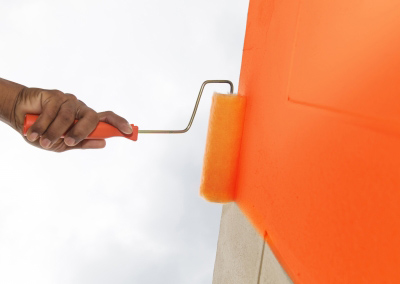- Remove any fixtures, such as nails, picture hooks, and light switch covers.
- Place drop cloths on floors and over anything that must stay in the room, such as large pieces of furniture.
- Wash walls with a soapy solution (a small amount of detergent in a bucket of warm water) to get rid of any dust. Rinse the walls to remove any traces of soap and allow time to dry. This means the paint will adhere to the wall, not the dust.
- Check the walls for any damage and for surface lumps and bumps.
- If any small amount of mold is present, use a bleach solution to remove it. (If large amounts of mold are present, call in a professional, you may have a bigger problem and paint will only hide it for a little while.) While wearing gloves, carefully apply the bleach solution to walls using a sponge and leave to soak for 15 minutes. Rinse thoroughly and again, allow them to dry completely.
- If existing paint is peeling or flaking, scrape back the area to remove the loose paint and then gently sand the surface so no edges of the old paint are obvious.
- Fill any dents or nail holes in the walls with pre-mixed filler.
- Use acrylic gap sealant for cracks or gaps in areas where there may be movement, such as near doors and windows.
- Once the fillers and sealers have set, sand down these areas. While you’re there, sand down any rough or shiny spots to improve adhesion and finish.
- Spot prime the filled areas.
- To finish, apply painter’s masking tape to areas which can’t be removed and any edges which may be difficult to paint around, such as skirting boards and fixed shelving.
- Once your wall is prepared, you’re ready to get started. Now go paint!

12 Easy Steps to Painting a Room
Connect
Recent
Abram’s Painting
Muncie, IN 47302
(765) 717-1641
